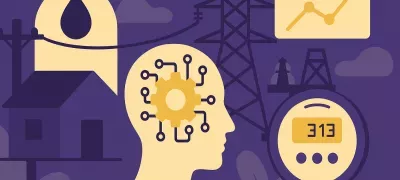
Mr Chunet, could you tell us about your role at ESA and the World Bank?
I represent ESA at the World Bank, as part of the GDA (Global Development Assistance) programme. This programme aims to promote the use of satellite technologies for development aid projects. It involves partnerships between ESA and national and international institutions such as the World Bank, AFD and the IMF.
How can satellite technologies improve the effectiveness of development aid?
Geospatial data makes it possible to observe phenomena at the heart of development issues, such as deforestation, the expansion of shanty towns and falling agricultural yields. For development players, these observations can be the basis for projects or help prioritise areas of intervention. The information is also useful for monitoring projects and assessing their impact. There are also more specific uses: for example, satellite observations can be used to monitor the indicators needed to issue carbon credits.
What different areas of development aid are potentially interested in using satellite data?
There are many. For example, geospatial data is useful for environmental disaster management, both in terms of crisis management and risk assessment. They provide information on areas of conflict or fragility, or are used to analyse urban development. Through observation of the seas, they address issues such as the blue economy, coastal erosion and water quality. These technologies also have a wide range of applications in agriculture and forest management, as well as in the energy, transport and water sectors, and even in health, particularly through information on pollution and other environmental conditions.
What are the specific uses in the energy sector?
Our activities around the theme of clean energy constitute one of the 12 intervention themes of the GDA programme; they began 6 months ago and we have targeted 6 use cases, each supported by a consortium.
Geospatial data can be used to assess the potential for investment in renewable energies, in relation to water resources, sunshine or wind patterns. It can also be used to assess a region's potential energy demand, and more generally to help prioritise the extension of electricity networks based on the location of consumption areas, topography and environmental risks. Another area of application is the inventory of high-voltage network structures. Another is the assessment of vulnerability to natural disasters. Finally, these technologies could find applications in asset management, for example in preventive maintenance or optimising pruning policies.
What are the advantages of these technologies?
Firstly, they are available on a large scale and often free of charge, thanks in particular to public players such as ESA, NASA and the space agencies of Japan and India. Through the Copernicus programme, for example, the ESA publishes open access images with a resolution of 10 metres, covering the globe every 5 to 6 days.
On the other hand, what are the limitations of these technologies or the constraints on their use?
The first limitation is the granularity of the data. For example, while spatial imagery can be useful for mapping high-voltage networks, it is less suited to low- and medium-voltage networks. This is why it is often appropriate to use them in conjunction with data collected in situ or aerial images - provided the latter are accessible. Bringing together data from these different sources is a promising area for innovation. It may also be necessary to map key infrastructures in order to exploit geospatial data, which limits its use.
Finally, although much geospatial data is freely available, analysing it comes at a cost, particularly when it requires the development of machine learning algorithms.
What factors are driving the development of the use of geospatial data?
Upstream, the launch of new constellations is mainly driven by the private sector and major public space agencies such as ESA and NASA. Some projects target specific applications, such as Aurora for forest fires. Each launch enables new technical advances to be implemented, with increased resolution and the deployment of specific sensors to enrich the range of data.
Downstream, the development of uses is stimulated by advances in imagery analysis applications. Numerous innovative applications are emerging. The GDA programme aims to support some of these projects - for example, we are currently supporting a project to assess the potential for photovoltaic production on roofs. In this sense, our ambitions may be in line with those of AFD's Digital Energy programme.

Alex Chunet



